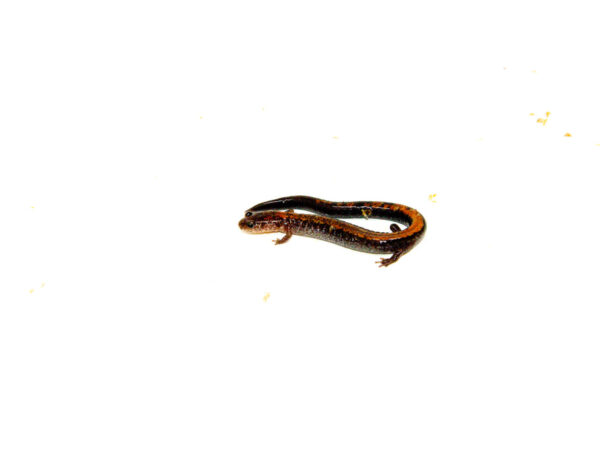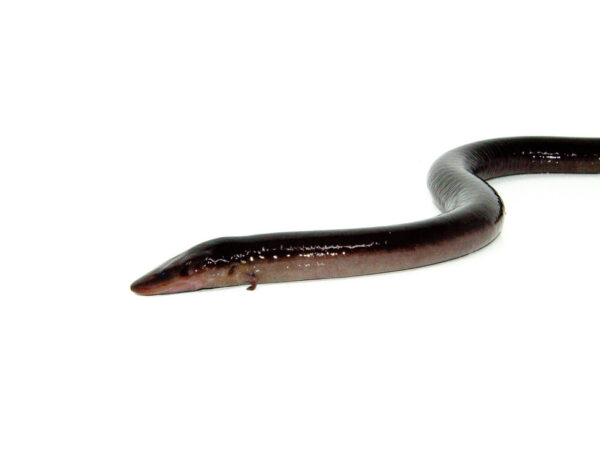Mississippi Slimy Salamander (Plethodon mississippi): The Mysterious Forest-Dweller
The mississippi slimy salmander (plethodon mississippi) is a terrestrial amphibian native to the hardwood forests of the southeastern United States. This species is part of the Plethodon glutinosus complex, a group known for its elusive behavior, lungless respiration, and distinctive defensive slime. Whether you’re a field herper, nature educator, or exotic pet keeper, the Mississippi slimy salamander offers a unique glimpse into the hidden world of forest-dwelling amphibians.
If you’re looking to house this fascinating creature or need care supplies for other amphibians, we recommend shopping at OneStopReptileShop.com, your one-stop resource for everything from terrarium setups to feeding tools.
Appearance and Identification
The mississippi slimy salmander (plethodon mississippi) is easily recognized by its sleek black body speckled with white or silver spots. It has a glossy, wet appearance and secretes a sticky, glue-like substance from its skin when threatened—hence the name “slimy.”
Key Features:
-
Coloration: Jet black body with light speckles
-
Length: Averages 4–6 inches
-
Texture: Smooth, moist skin with no external gills
-
Distinction: Lacks lungs; breathes through skin and mouth lining
This salamander is a master of camouflage, often blending into leaf litter or under logs in shady forested areas.
Habitat and Range
The mississippi slimy salmander (plethodon mississippi) is most commonly found in Mississippi, western Alabama, and eastern Louisiana. It prefers moist deciduous woodlands, where it hides beneath logs, rocks, or bark during the day.
Habitat Requirements:
-
Well-shaded forest floors
-
High humidity (above 80%)
-
Loose, moist soil or leaf litter
-
Natural cover like rotting logs and moss
Because they are lungless, these salamanders require environments that allow for continuous cutaneous respiration, meaning a clean and damp setup is essential in captivity.
Behavior and Temperament
This species is nocturnal and terrestrial, rarely venturing far from its home range. They are secretive, coming out at night to forage for insects and return to their hiding spots before dawn.
Notable Behaviors:
-
Territorial with other salamanders
-
Secretes sticky mucous when threatened
-
Will play dead or retreat into crevices to avoid predators
These salamanders are best observed rather than handled, as their skin is sensitive and easily harmed by dry or oily hands.
Diet and Feeding
The mississippi slimy salmander (plethodon mississippi) is insectivorous, feeding on small invertebrates found in leaf litter.
Diet Includes:
-
Small crickets
-
Springtails and isopods
-
Fruit flies and pinhead roaches
-
Earthworms (cut into smaller pieces for juveniles)
Feed every 3–4 days, offering prey no larger than the width of the salamander’s head. Use calcium and vitamin D3 dusting weekly to ensure healthy bone development.
You can find a variety of live feeders and feeding accessories at OneStopReptileShop.com, which specializes in amphibian nutrition and tools.
Captive Care and Enclosure Setup
Caring for mississippi slimy salmander (plethodon mississippi) requires a setup that mimics a cool, forest-like environment.
Tank Recommendations:
-
Size: 10-gallon horizontal tank for a single adult
-
Substrate: Moist topsoil, leaf litter, and moss
-
Décor: Bark, cork rounds, and hides for burrowing
-
Humidity: Maintain at 80–95%
-
Temperature: Keep between 60–72°F
-
Lighting: No direct lighting needed; ambient room light is sufficient
Mist daily or as needed to maintain humidity. A secure lid is essential to prevent escapes. Avoid cohabitating this species with others due to its territorial nature.
Reproduction
In the wild, breeding typically occurs during spring or early fall. Like other Plethodon species, mississippi slimy salmander (plethodon mississippi)—meaning their eggs hatch into miniature adults, skipping the aquatic larval stage.
Reproduction Facts:
-
Internal fertilization via spermatophore
-
Females lay eggs in hidden, moist chambers
-
Clutch size: 10–30 eggs
-
Females guard eggs until hatching (~2 months)
Captive breeding is possible but rare due to the salamander’s secretive behavior and environmental sensitivity.
Conservation Status
Themississippi slimy salmander (plethodon mississippi) is currently considered stable across most of its range. However, it faces threats from habitat destruction, pollution, and climate change. Because of its dependence on pristine forest ecosystems, it’s an important bioindicator species.
Supporting ethical care and habitat replication in captivity helps promote awareness of these often-overlooked amphibians. For habitat supplies, OneStopReptileShop.com carries everything you need for proper moisture, hiding, and feeding conditions.
Final Thoughts
With its striking appearance, fascinating behavior, and unique respiratory biology, themississippi slimy salmander (plethodon mississippi) is a gem of southeastern forests. Although rarely seen in the open, this species plays a key role in local ecosystems and is a rewarding pet for experienced amphibian keepers.
Whether you’re setting up a terrarium or sourcing proper feeders, make OneStopReptileShop.com your go-to source for all amphibian needs.










Reviews
There are no reviews yet.